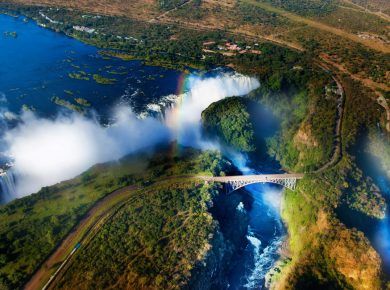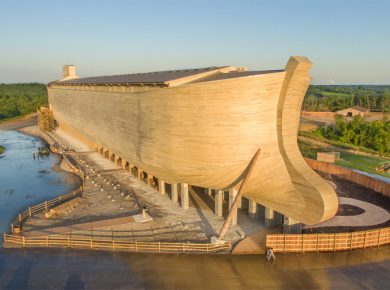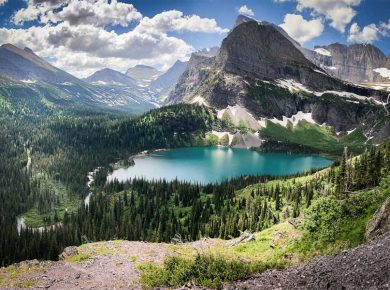
Few destinations on Earth can match the stark, breathtaking beauty of Antarctica. A destination primarily visited by explorers, scientists, and nature enthusiasts for much of its known history, the icy continent has recently started to attract absolutely different visitors from ordinary tourists to top managers escaping burnout and billioners wanting a reboot. This might seem surprising at first glance, but delve deeper, and it’s easy to see why this trend is catching on.

Firstly, the unparalleled tranquility and isolation offered by Antarctica create the ideal environment for introspection and rejuvenation. In a world that’s increasingly interconnected and always ‘on’, where inboxes and instant messages dictate the pace of life, Antarctica stands as a stark, untouched contrast. This is a place where the incessant chatter of digital notifications gives way to the sound of shifting icebergs and penguin calls, a place where the hustle of metropolitan life is replaced by the slow, solemn dance of the Southern Lights. For those who have spent their lives in the fast lane, this change of pace can be life-changing.

Businessman and top managers often lead lives that are incessantly busy, always in the public eye, and fraught with immense pressure. Antarctica’s remoteness offers them an escape, a chance to disconnect from their routine, away from prying eyes and ceaseless demands. It provides an opportunity to reconnect with oneself and with nature, to recharge mentally, physically, and spiritually. In many ways, it’s akin to a reset button for life.
Secondly, the journey to Antarctica is a potent reminder of our planet’s fragility and the urgent need for sustainable living. With climate change rapidly altering its unique landscape, it’s impossible to visit Antarctica and not come away with a deeper understanding and respect for our environment. For many people this experience can be transformative, potentially influencing their future life.

Visiting the last great wilderness on Earth is also a humbling experience that puts the human condition into perspective. Amidst the towering icebergs and endless expanse of white, personal ambitions and worries seem insignificant. This powerful experience can lead to a profound shift in perspective, promoting a healthier, more balanced approach to life and work.
Lastly, the trend of traveling to Antarctica is fueled by a certain prestige and exclusivity attached to it. Despite more accessible tourism, it remains an adventure that’s available only to a select few, making it an appealing proposition for those who value unique experiences. Luxury cruise operators have also recognized this trend and now offer opulent accommodations and fine dining amidst the icy wilderness, thereby marrying luxury with adventure like these Antarctica cruises.

So, Antarctica, with its tranquil environment and humbling landscapes, provides an ideal backdrop for anyone looking to reset their lives. It’s not just a journey across oceans, but also a deeply personal journey of introspection and rediscovery. As more and more individuals seek meaningful and transformative experiences, it’s no surprise that the Antarctic appeal continues to grow.
If you decide to visit Antarctica, here are some essential tips that may be useful to you:
The Ideal Season to Visit
Since the continent lies in the southern hemisphere, tourists visit Antarctica in summer between November and March. Remember that the sole season of the year when ships can travel successfully across the continent, and back is this season. Antarctica’s winters are dreadfully harsh.

Furthermore, the climate in the Antarctic is erratic and variable. One day will likely be sunny and brilliant, while the next will be covered in snow. Although it hardly drops below zero throughout the summer, having the proper cold-weather clothes is always a good idea.

The Drake Passage
Suppose you’re sailing from South America, the most popular route. In that case, you will undoubtedly learn about the Drake Passage when arranging your voyage to the continent. The water body known as the Passage runs from Cape Horn in South America to the South Shetland Islands in Antarctica. It stretches into the Southern Ocean and joins the Atlantic Ocean’s southwest corner to the Pacific Ocean’s southeast corner.

Many advise that you arrive equipped because the 500-mile-wide gap between Cape Horn and Livingston Island – the shortest route from Antarctica to any other continent – has the image of being unpredictable. These preparations might include ginger chews, seasickness bands, and nonprescription or prescription drugs for this possibly illness-causing trip. Crossing the Drake is a milestone for many people. Additionally, it’s an encounter you won’t soon forget, mainly if you do it when it’s challenging.
The Distinction Between Cruises and Expeditions
There are two choices when it pertains to sailing to Antarctica. First up is a typical cruise. Because they bring you as near the coastline as imaginable, bigger passenger ships are marketed as Antarctic experiences.
Because of the enormous ship’s dimensions and incapacity to navigate thick ice sheets, they rarely travel further south. Furthermore, although the ship is capable of docking, there are severe restrictions on how many passengers per vessel are allowed to set foot on the landmass each day.

Antarctica expeditions, on the other hand, have always stoked curiosity and enhanced the attraction of the frozen continent. A number of the most famous trips to Antarctica are still known today for their accomplishments, tragedies, or tales of survival in the face of all obstacles.

Your eyes become opened to the magnificent icescapes of Antarctica, which were carved by the most ferocious natural forces. You can go to landing spots, which provide some of the most beautiful views on earth. The magnificent wildlife of Antarctica, including its well-known penguins, whales, and seals, can also be observed. You can discover Antarctica with the aid of an expedition team while hiking, kayaking, or even while camping there.


The Various Penguin Species
One may only find the most identifiable penguin species in Antarctica, its neighboring islands, and the sub-Antarctic archipelagos of South Georgia and the Falklands. There are 17 different kinds of penguins worldwide. Emperor penguins are arguably the most representative of the entire species of penguins in the world.

Giant penguins are emperors, which may reach a height of 48 inches and weigh between 49 and 99 pounds. With an estimated 2.5 million pairs in the area, Adélie penguins are the most common penguin species and the only ones to inhabit Antarctica. With an evaluated 300,000 breeding pairs, gentoo penguins are the second-smallest population of penguins after emperor penguins.

It is not unusual when a chinstrap penguin is observed from an expedition ship, considering that there are around seven million pairs in Antarctica and the sub-Antarctic. According to estimates, 11 million pairs of macaroni penguins exist in the Antarctic and subantarctic. Arctic and subantarctic rockhopper penguins are divided into northern, southern, and eastern subspecies.

They are separated based on how they reproduce and where they breed. The Antarctic and sub-Antarctic Magellanic penguins, which bear Ferdinand Magellan’s name, are known to be wary of people and frequently seek refuge in their burrows when they are nearby. The king penguin is the second-largest species exclusively found in the sub-Antarctic. They are roughly 37 inches tall and weigh 35 pounds when they are fully grown. The sub-Antarctic islands’ shoreline is home to approximately two million breeding pairs of penguins.

Learn About the Birds
Most Antarctica cruises and expeditions provide viewing of the albatross, cormorants, sheathbills, skuas, and petrels, which are all noteworthy. Most seabirds breed in high dens because of the low snow-free nesting areas. The snow petrel, white with black eyes, a beak, and an underdown, is most likely one of the most stunning birds.

There are several unique bird species that live in the frequently icy and windy environments of Antarctica. Despite the difficulties, these birds have adjusted to their environment and are still thriving in great numbers.
One of the eye-catching birds you might spot on your expedition is the Antarctic Tern, with its striking black crown, white body, and vivid red bill and feet. The medium-sized bird breeds typically breed in colonies, however solitary couples are frequently seen on barren rocky outcrops and gravelly parts of islands, where their coloration stands out against the landscape.

Skuas, on the other hand, devote the majority of their existence at sea, but throughout the breeding season, they will perch on exposed headlands and open terrain, increasing your chances of seeing this predators. Petrels also have different breeds such as the Wilsons Storm Petrel, Cape Petrel and Southern Giant Petrel, to mention a few.






